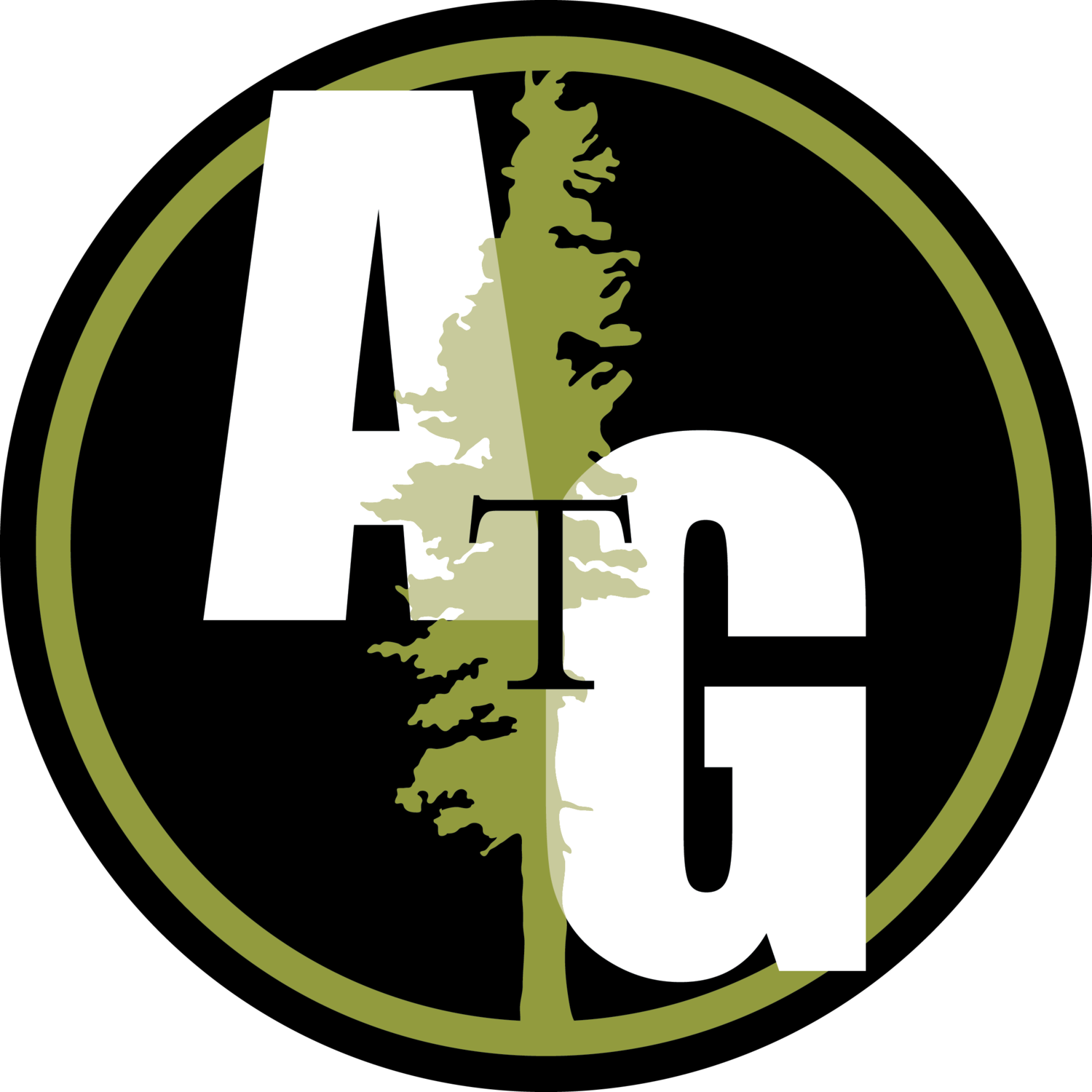Brian French and Will Koomjian measuring the Brummit Fir in 2008. (Photo by Sean O'Conner)
Search for Oregon's Tallest Trees: Ongoing project partnered with DOGAMI and the aid of LiDAR
Some of the tallest trees in Oregon and Washington reside in steep sloped patches of remnant old-growth near Oregon's central and southern coast range. In these areas, Douglas fir often towers above mixed stands of hemlock, big-leafs maple and Sitka spruce(near the coast).
In 2008, LiDAR hits identifying trees taller than 300ft. were shared with our group and after many trips, has lead to finding several of Oregon's tallest trees. Most of these trees are found within Coos, Douglas and Lane counties. However, we have also measured trees nearly 300ft in Clackamas, Marion and Linn counties.
The Brummit Fir (aka Doerner Fir) is estimated 350-400 years in age and is measured to be the tallest Douglas-fir and the tallest tree in Oregon. Although this tree is tall, it is still adolescent in the life expectancy of a Douglas-fir. This is typical for tall trees, as old trees will often display larger girth and shorter height.
Oregon map of Pseudotsuga menziesii subsp. menziesii, Douglas-fir's native range.
This has been an ongoing series of expeditions. Many of these trips have been disappointing, as LiDAR is a useful tool, but is not always accurate for preliminary measurements. Climbing these trees and using a 'tape drop' method still proves to be the most accurate way to confirm tree heights. So far, we have confirmed heights for about 80 trees. None have been taller than 327ft, though several are in the 320-322 range.
After dozens of trips to this forest area, we teamed up with OPB's Oregon Field Guide to share our work. Below is a link to stream this episode.
Oregon Field Guide's Search For Oregon's Tallest Tree
Preview: Season 29 Episode 2 | 30s
As LiDAR technology maps more and more of our state, DOGAMI scientist Ian Madin is finding tall trees no one knew about before. In this this story, Ian brings champion tree climbers Brian French and Will Koomjian. Once identified, this "Ascending the Giants" team leaves the fancy technology behind and heads up the trees with a measuring tape.
Chief scientist Ian Madin and arborist Brian French review LiDar data at DOGAMI.
Todd Sonflieth/OPB
Brian French and Will Koomjian love to climb trees. They do it professionally, recreationally and in service to science. Their group “Ascending the Giants” started up about in 2007 with a mission to scale and document Oregon’s tallest, oldest and biggest trees.
Review of rope-based access methods for the forest canopy: safe and unsafe practices in published information sources and a summary of current methods
David L. Anderson1*, Will Koomjian2, Brian French2, Scott R. Altenhoff3 and James Luce2
We've spent years climbing among different cultures, researchers and many start to finish projects. During this time our team found inconsistencies, unsafe practices and outdated disciplines particularly among the canopy research community. After much discussion, we decided to review published articles and update the community on safe practices. We teamed up with Dr. David Anderson of the Peregrine Fund and after a year's work, our team created the most comprehensive literature review on this subject. Recommendations and safe climbing sources are also offered in this published article.
Summary
- The availability of reliable information on tree climbing methods is critical for the development of canopy science and for the safety of workers accessing the forest canopy.
- To assess the breadth and quality of information contained in published climbing information, we performed searches in Web of Science and Google Scholar and evaluated 54 published sources on 10 predetermined criteria related to safety.
- We found a high incidence of unsafe recommendations that, if followed, could result in serious injury or death. Common errors included recommendations for equipment not suitable for tree climbing, advocating methods suitable for rock climbing but that can result in falls and trauma in tree climbing, and outdated information that no longer reflects best practices.
- We conclude by providing safety recommendations and a short review of tree climbing methods. This article thus serves as a guide for finding and interpreting best sources of methods for canopy access.
Canopy Tours: Connecting old-growth trees, researchers and people
A sketch for advertising a climbing system for the National Audubon Society Conference in 2013. ATG brought 160 people near the tops of 250ft Douglas-fir trees at the Audubon Society of Portland's forest sanctuary.
We have found that bringing people to the tops of trees is the most powerful experience offered when connecting the human/tree relationship.
Over the years, we have brought hundreds of people into trees. This has included general public, researchers, non-profit staff, journalists, film directors and more. We take great pride in offering the safest, educational experience to better understand trees and forest ecology.





